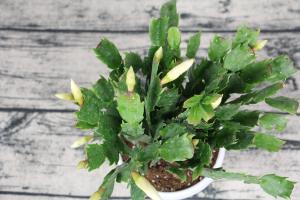Why Can’t You Plant Tomatoes and Corn Together?
Many gardeners are aware that some plants do not grow well together, while others thrive in combination. One of the most common questions is why tomatoes and corn can’t be planted together. This article will explore the reasons behind this conventional wisdom and suggest some alternative planting strategies.
The Reasons Behind the Belief
The common belief that tomatoes and corn don’t grow well together may have originated from the fact that both plants have high nutrient requirements, particularly nitrogen. Corn is a heavy nitrogen feeder, and when planted together with tomatoes, it may leave the soil depleted of these nutrients. In addition, corn may release allelopathic compounds into the soil that may negatively affect tomato plants.
Another reason is that corn and tomatoes are susceptible to the same pests and diseases. Planting them together may create an environment that could lead to infestation or the spread of diseases that could wipe out both crops.
Alternatives to Planting Tomatoes and Corn Together
Despite the conventional wisdom that tomatoes and corn shouldn’t be planted together, there are ways to work around this restriction. One option is to stagger planting times, so that the two plants mature at different times. For instance, starting the tomato plants earlier than the corn, or planting them after the corn has already established, may help avoid competition for resources.
Another option is to interplant. This involves planting smaller crops like beans or peas in between the rows of corn or tomato plants. The smaller plants will utilize the soil’s nutrients, preventing the corn or tomato plants from overtaxing it. Additionally, interplanting with plants like marigolds or other insect-repelling plants can help reduce the incidence of pests and diseases.
Tips for Growing Tomatoes and Corn in the Same Garden
If you’re determined to plant tomatoes and corn together, there are several tips you should keep in mind. First, ensure that the soil is well-drained and fertile, with plenty of organic matter to supply nutrients. Second, water both plants adequately, avoiding overwatering or underwatering. Third, manage pests and diseases through regular inspection and early intervention, such as pruning or applying natural insect repellents. Finally, rotate crops regularly to prevent the buildup of pests and diseases in the same area.
Conclusion
While there may be some truth to the conventional wisdom that tomatoes and corn shouldn’t be planted together, it is not necessarily a hard and fast rule. By following some simple tips and techniques, gardeners can successfully cultivate both these plants in the same garden. The key is to ensure that each plant has access to the nutrients it needs, manage pests and diseases, and rotate crops regularly to maintain soil health.

 how many times do yo...
how many times do yo... how many planted tre...
how many planted tre... how many pine trees ...
how many pine trees ... how many pecan trees...
how many pecan trees... how many plants comp...
how many plants comp... how many plants can ...
how many plants can ... how many plants and ...
how many plants and ... how many pepper plan...
how many pepper plan...































